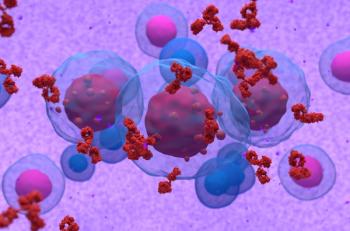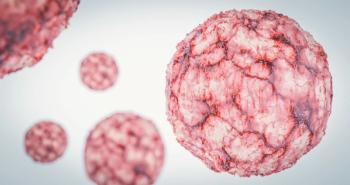
FDA Grants Orphan Drug Designation to Novel Gene Therapy for Fabry Disease
Key Takeaways
- EXG110 is a novel gene therapy targeting Fabry disease, designed for improved efficacy, safety, and dosing through direct delivery to liver and heart cells.
- Fabry disease is caused by insufficient alpha-galactosidase A, leading to lipid accumulation and complications like renal failure and cardiac disease.
Fabry disease is a rare lysosomal disorder that causes excessive deposition of lipids in tissues.
FDA officials granted orphan drug designation to EXG110 (Exegenesis Bio), a novel gene therapy being investigated for use in Fabry disease.1
Fabry disease is a rare lysosomal disorder that causes excessive deposition of lipids in tissues. This can lead to renal failure, cardiac disease, and strokes. By delivering the genetic payload directly to liver and heart cells, EXG110’s 1-time treatment is designed for improved efficacy, safety, and dosing.1
According to a news release from Exigenesis Bio, the first patient has been dosed in a clinical trial in China. The company also plans to launch a US-based clinical trial.1
“The FDA’s decision to grant orphan drug designation to EXG110 highlights the need for better approaches to treat Fabry disease, a debilitating condition that affects thousands of people worldwide,” Zhenhua Wu, PhD, CEO of Exegenesis Bio, said in the news release.1
Patients with Fabry disease do not produce enough alpha-galactosidase A (alpha-GAL) which breaks down sphingolipids and prevents them from collecting in the blood vessels and tissues. Without functioning alpha-GAL enzymes, harmful levels of sphingolipids build up in the body, affecting the heart, kidneys, brain, central nervous system, and skin.2
There are 2 types of Fabry disease. Symptoms of classic Fabry disease appear during childhood or adolescence, with painful burning sensations in the hands and feet present as early as age 2 years and progressing over time. Late onset or atypical Fabry disease do not experience symptoms until their 30s or older, and the first indication may be kidney failure or heart disease.2 Atypical Fabry disease is more common, affecting about 1 in every 1500 to 4000 men and individuals assigned male at birth, compared with approximately 1 out of 40,000 for classic disease.2
Fabry disease can occur in women, although it is often asymptomatic or mild and easy to dismiss, so the condition is frequently undiagnosed. Women are typically not diagnosed until about 16 years after symptoms first appear, and often have a more drawn-out course of disease compared with men.This variability of symptoms in women may be explained through X-chromosome inactivation, which occurs when 1 of the 2 X-chromosomes becomes inactivated inside female embryonic cells.3
There is no cure for Fabry disease, but medications can ease symptoms and there are 2 treatments that may slow the buildup of the fatty substances. The primary goal of these treatments is to prevent heart problems, kidney disease, and other life-threatening complications.2
Biweekly enzyme replacement therapy involves an infusion of a lab-made enzyme similar to the alpha-GAL enzyme. The current options are agalsidase beta (Fabrazyme; Sanofi) and pegunigalsidase alfa (Elfabrio; Chiesi).2
Oral chaperone therapy can also be an option, involving small molecules that repair faulty alpha-GAL enzymes. Migalastat (Galafold; Amicus Therapeutics) is taken every other day. Importantly, however, it may not work for all patients and its efficacy is dependent on patients’ specific genetic mutation in the GLA gene.2
As a 1-time treatment, EXG110 could simplify management of Fabry disease for affected patients. It is engineered with a proprietary capsid to increase delivery, potentially improving efficacy and safety and enabling lower dosing.1
REFERENCES
1. US FDA grants orphan drug designation to EXG110, a novel gene therapy for Fabry disease. News release. BusinessWire. December 3, 2024. Accessed December 4, 2024. https://www.businesswire.com/news/home/20241203974744/en/US-FDA-Grants-Orphan-Drug-Designation-to-EXG110-a-Novel-Gene-Therapy-for-Fabry-Disease
2. Fabry Disease. Cleveland Clinic. Updated August 21, 2023. Accessed December 4, 2024. https://my.clevelandclinic.org/health/diseases/16235-fabry-disease
3. Women and Fabry Disease. Fabry Facts. Accessed December 4, 2024. https://www.fabryfacts.com/women-and-fabry-disease.php#:~:text=Heterozygous%20women%20with%20Fabry%20disease,%2C%20renal%2C%20and%20cerebrovascular%20complications.
Newsletter
Stay informed on drug updates, treatment guidelines, and pharmacy practice trends—subscribe to Pharmacy Times for weekly clinical insights.



















































































































































































































